______________
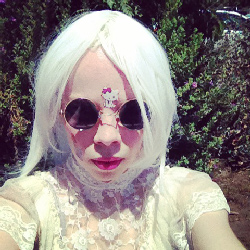
‘I guess hoarders are having a bit of a moment. As the details of the federal “relief” package indicate, the handful of freaky cretins currently running the country hoard wealth the way your suburban-brained neighbor now hoards toilet paper. Though there’s a slight difference in kind, these anti-democratic opportunists share a trait with the standard-issue, conspicuously consuming Americans featured on the A&E reality television show series Hoarders, which still appears to be running after 10 seasons. Writer and artist Kate Durbin takes A&E’s junk pilers as the subject of Hoarders, her new collection from Wave Books.
‘• To save you the trouble—or the pleasure—of figuring out what’s going on, I’ll just say that Durbin is juxtaposing selected quotes from Hoarders’ subject with descriptions of images captured by the show’s camera. In this case, Tara’s words are in italics, and the images are in plain text.
‘• Though the swift-moving spectacle of the television show invites viewers to cast easy judgment on these hoarders, Durbin employs poetry’s slower speed to show a more complicated picture. Instead of using Tara’s story to make us feel better about ourselves for not being hoarders, she indicts aspects of American culture we all participate in—religion, capitalism—and reveals our complicity, all while dropping a lot of sight gags in the process.
‘• My favorite funny moment: “I have done the Lord’s work humbly Thomas Kinkaide puzzle of Cinderella castle.” My favorite funny-sad moment: “My brain is not wired for this 18-year old pile of unopened mail.” My favorite depressing moment: “My mother, she had a one-bedroom Nativity set / We all ended up sleeping in the same crumbling Family Circus comic strip.”‘ — Rich Smith
Kate Durbin Site
Relevant at a Slant: Kate Durbin in Conversation with Joseph Mosconi
Kate Durbin Interview
Fame and Feminism
Buy ‘HOARDERS’
 Kate Durbin HOARDERS
Kate Durbin HOARDERS
Wave Books
‘In Hoarders, Durbin deftly traces the associations between hoarding and collective US traumas rooted in consumerism and the environment. Each poem is a prismatic portrait of a person and the beloved objects they hoard, from Barbies to snow globes to vintage Las Vegas memorabilia to rotting fruit to plants. Using reality television as a medium, Durbin conjures an uncanny space of attachments that reflects a cultural moment back to the reader in ways that are surreal and tender. In the absurdist tradition of Kafka and Beckett, Hoarders ultimately embraces with sympathy the difficulty and complexity of the human condition.’ — Wave Books
Excerpt
LINDA
WASHINGTON, D.C.
My name is Linda, and I love cooking rotting food
My kitchen has all kinds of wonderful molds for salmon mousse, bombe mold, Mongolian firepot, got that bag of sugar with mice in it
Food is like creativity and possibilities in life jar of old nuts with bugs
But I don’t have a working refrigerator black sludge
When I buy food, I hang it from the chandelier in order to keep the rats from getting into Safeway bag slowly rotating with moldy hummus, CVS bag with stale Special K, Yes Organic Market bag with blackened corn, Safeway bag with shriveled lettuce, CVS bag with stale Fruit Loops, Yes Organic Market bag with puckered granny apples, Safeway bag with budding onions, CVS bag with stale Cheerios, Yes Organic Market bag with old organic indecipherable
It’s as if somebody took a municipal garbage dump and just dumped it into kitchen cabinets streaked with brown goo
Or a swamp thing growing a new life form in the basement tub of old chicken bones, sweating
Or an evil witch from a fairy tale rotting peach
Or Texas Chainsaw Massacre dead squirrel in a butter dish
My daughter threatens me that everything could be condemned, that the house could fall in upside down egg carton with a postcard of the sky on it
Because I’m not doing enough to maintain kitchen sink piled with years old dirty dishes
This is a million dollar neighborhood and the neighbors are not happy, so they’ve called the zoning board smashed Starbucks cup with X2 2M N WE M handwritten on it, and rat poop on it
I’ve been living in this house about thirty years, but it was much different before 25-year-old blackened candy
It was spotless on the kitchen mantle, a figurine of an Italian villa wrapped in plastic
My husband was an abusive sociopath fossilized rat
It was like living with Jim Jones dirty unmarked bottles of black liquids
It was constantly up and down—very good, and very bad 20-year-old hot sauce that belonged to her husband that she doesn’t even like
I love you, I love you, I love you, move out, I can’t stand you apple, apple, apple, that thing in the peanut butter jar isn’t peanut butter
Even though I kept a beautiful home, he convinced me I was maggot larva
He didn’t like me to do any artwork or any crafts, so that’s why I channeled my creativity toward The Taste of Mexico, The Jewish Cookbook, Flavors of Portugal, From Hearth to Cookstove, Vegetarian Times, Scandinavian Cooking, First Ladies’ Cookbook, Julia Child’s Kitchen Wisdom
My daughter tried to convince me that the food I cooked was weird apple pie with raw chicken hearts
What’s weird about dried mealworm bodies ground up to make nice cookies oven window black with mold
She encouraged me to give up cooking and do more painting Linda made of herself looking into a hand mirror with harrowed eyes; surrounding the mirror in the painting are perfume bottles and flowers
I save old soda cans because the tin snips can be used as flowers dried orange peels Linda put on the radiator so when it turns on the house smells of oranges and rot
My husband tried to keep me from going to the doctor because I would have found out he’d given me venereal disease, so it got worse and worse flies buzzing room to room
He left me when I was sick and then I started to lose my grip on the house over the kitchen window, a cloth with cut fruit on it
I had gone through so much, I had cried so much, and I’d gone into a frozen state old ice chest piled with oozing Breyers ice cream, popsicle sticks smothered in goo, dirty ceramic snowman, First Alert smoke alarm box, burlap Jesus, Marcus Aurelius bust wearing sunglasses
One day I might make make another mistake and eat cracked pineapple jar with something black inside
Extras
Panacea Poets: Kate Durbin
YouTube Curated by Kate Durbin
______________
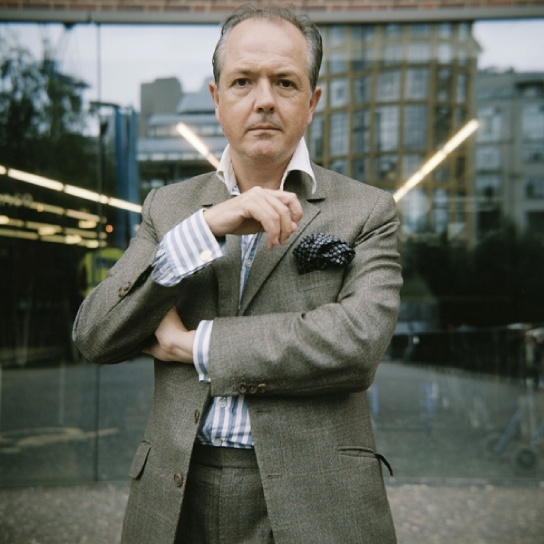
‘“NOTHING IN THIS BOOK is derived from the use of Google or Wikipedia” reads the last line of Adrian Dannatt’s Doomed and Famous: Selected Obituaries. I had thought not. This entertaining collection must derive primarily from personal experience. Jabs, exultations, gossipy whispers, filagreed connections, damning praise, unsung triumphs, proud damnations are not gleaned from plodding research but from the perspiring intimacy of a witness.
‘Dannatt displays a dizzying familiarity with high and low society, marking achievements that have designed, dyed, or shredded our cultural fabric. You begin to think, gee whiz, this guy sure likes weirdos. His subjects are not all weird, however, not by a long shot, though the cumulative effect is extravagant eccentricity. You can find Andy Warhol superstar Ultra Violet and degenerate film actor Rockets Redglare (who made “his gesture to the night on a stolen saxophone”), as well as gallerist Guillaume Gallozzi (who introduced graffiti art to the marketplace), prominent architect and editor Michael Spens, or — a favorite of mine — Abe Feder, who created lighting for stage and architecture. Light “is the only design material that can fill space without blocking it,” Feder said. He developed gels and intensities to light an all-black cast in 1934, which led to his 1936 collaboration with Orson Welles in what came to be known as Welles’s “Voodoo” Macbeth, and went on to light a continuous stream of Broadway hits.
‘Dannatt has chosen his 75 subjects from both the famed and ill-famed, the widely celebrated (“an accomplished and acclaimed artist”) and the flamingly obscure (“New York’s most famous unknown artist”). Energetic descriptions revive dazzling heydays. Each subject is distinguished by his or her style, expressed through grace, stubborn excess, artful neglect, or relentless experimentation. Even I have personally glimpsed some of these people through the windows of the rushing express train of my life.
‘There’s no negative space, no death in these obits. Doomed and Famous is not a rage against the dying of the light but rather the flick of a match igniting a cigarette that is to be enjoyed in long draws, its ember burning closer and closer to the lips. Danger sizzles in each of these lives. Would you invite Adrian Dannatt to write your living obituary, a service he offers for a small fee? What, in his estimation, encapsulates your life? Would you pique his interest? Do you have that je ne sais quoi? He’s in love with a certain energy, a vintage champagne of vitality. The book can be a rich diet if you try, like I did, to read it cover to cover. It is a salon frozen in print, or a Wunderkabinett of rare specimens. The language is tasty, erudite, and slightly offbeat.
‘If I were in charge of high school curricula, I’d make Doomed and Famous required reading, to empower eccentric young souls. Dannatt celebrates the life that’s navigated from a true spot, from the inside out. And the book is enlivened by Hugo Guinness’s charming drawings, which add an impish warmth. “You cannot mention a painter, a writer or a society figure from about 1600 AD to the present day without [Adrian] knowing something about them or their circle,” Guinness tells us. “When he arrived on his pink bicycle, wearing other people’s cast off clothes, full of beans and mischief, I couldn’t possibly have said no to his request for me to illustrate his book.”’ — Kathelin Gray, LARB
Living Obit
Dannatt, Adrian
Adrian Dannat Remembers Late New York Dealer Paul Kasmin
“But this is my obituarist—he has to come in with me.”
Buy ‘Doomed and Famous’
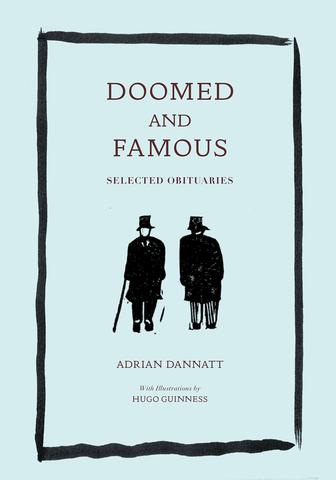 Adrian Dannatt Doomed and Famous: Selected Obituaries
Adrian Dannatt Doomed and Famous: Selected Obituaries
Sequence Press
‘“Here comes Mr. Death!” Working as an obituarist for decades, Adrian Dannatt has tracked and dredged the dead, often finding his subjects amongst colleagues, friends and acquaintances with a macabre disregard for the etiquette of mortality. His speciality are those who would not otherwise merit such attention; personalities that had drifted their whole lives under the radar of public appreciation and whose eccentricity or criminality made them impossible candidates for the fleeting immortality of a newspaper necrology.
‘Dannatt is devoted to the odd and outrageous, marginal and maverick, maintaining a veritable lust, perverse certainly, for turning their wayward existences into a snappy thousand words of polished prose. This book is a selection of some of the best, meaning most improbable, of these miniature biographies, simply arranged in chronological order from over twenty-five years of such an unusual if not sinister occupation.
‘Here is compiled an almost fictive cast of characters including an imaginary Sephardic count in Wisconsin, an insomniac collector of the world’s rarest clocks, a discrete Cuban connoisseur of invisibility, an alcoholic novelist in Rio, a Warhol Superstar gone wrong, a leading downtown Manhattan dominatrix, a conceptual artist who blew up a museum and much, much more.
‘Beginning with a preface in which the author outlines his obsession with the dead and that lifelong lure-of-the-obscure, Dannatt terminates this volume with his own extinction, performing the difficult if not dangerous task of penning his personal life history and ultimate end, his own obituary indeed.’ — Sequence Press
Excerpts
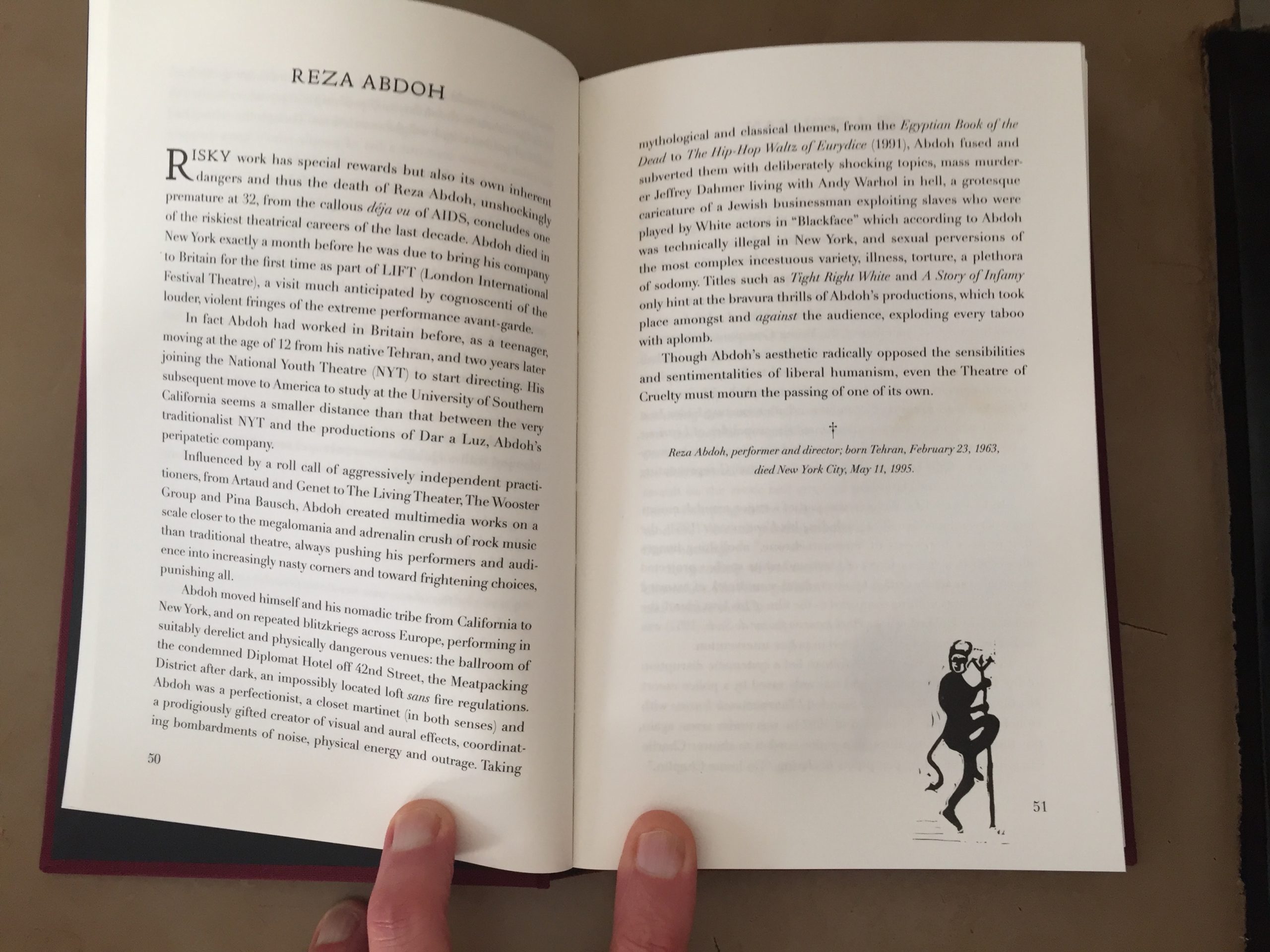
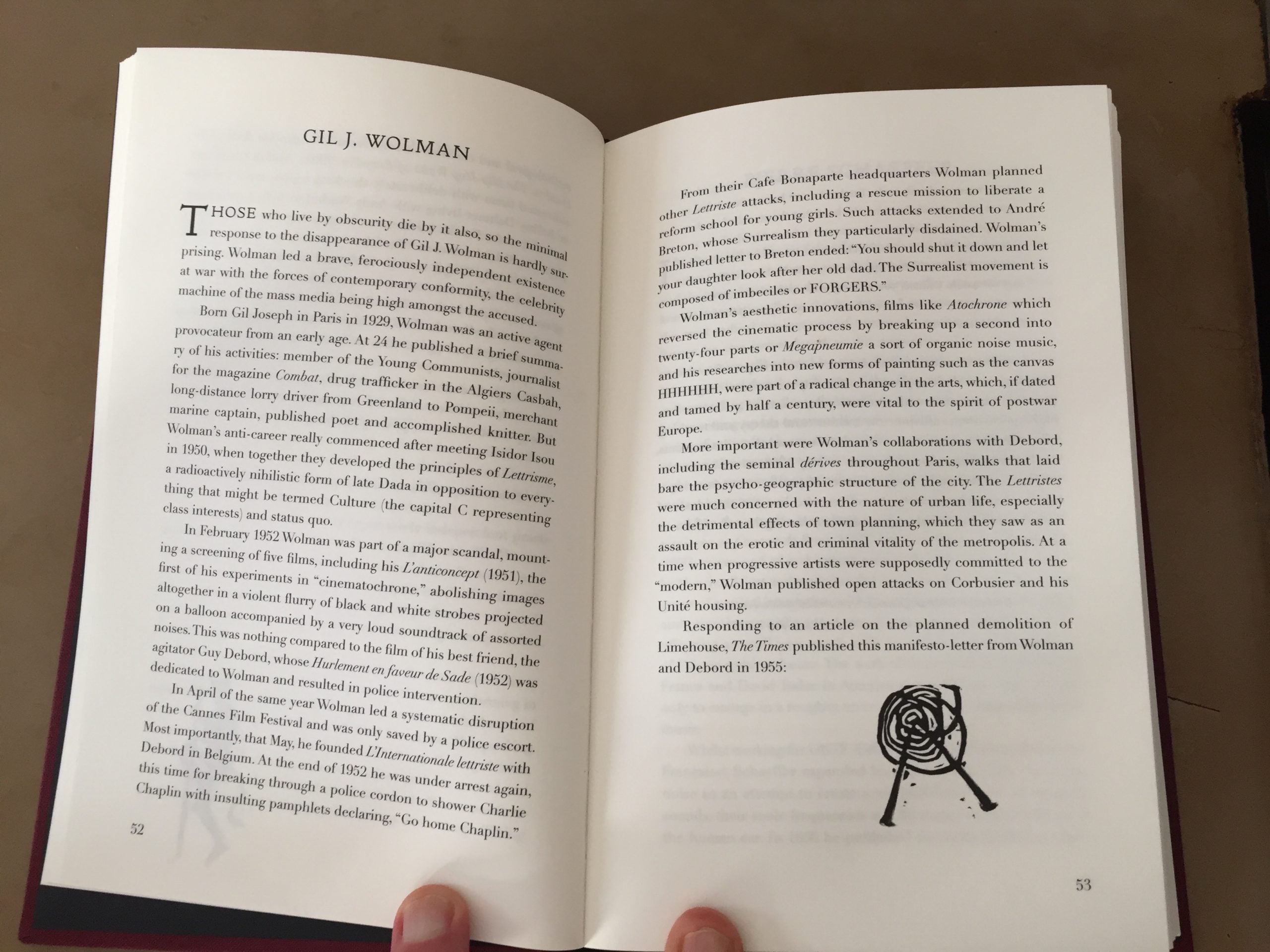
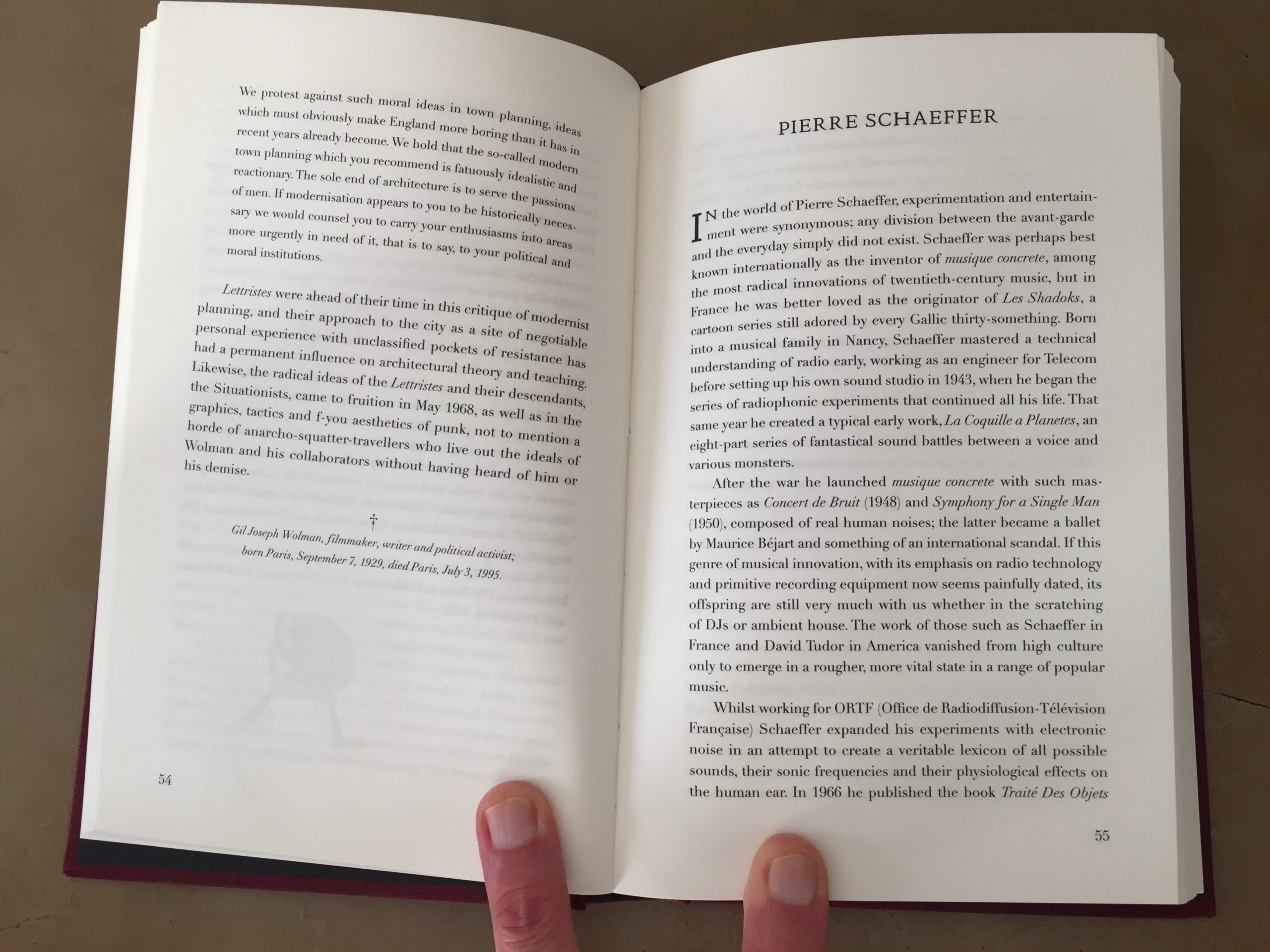
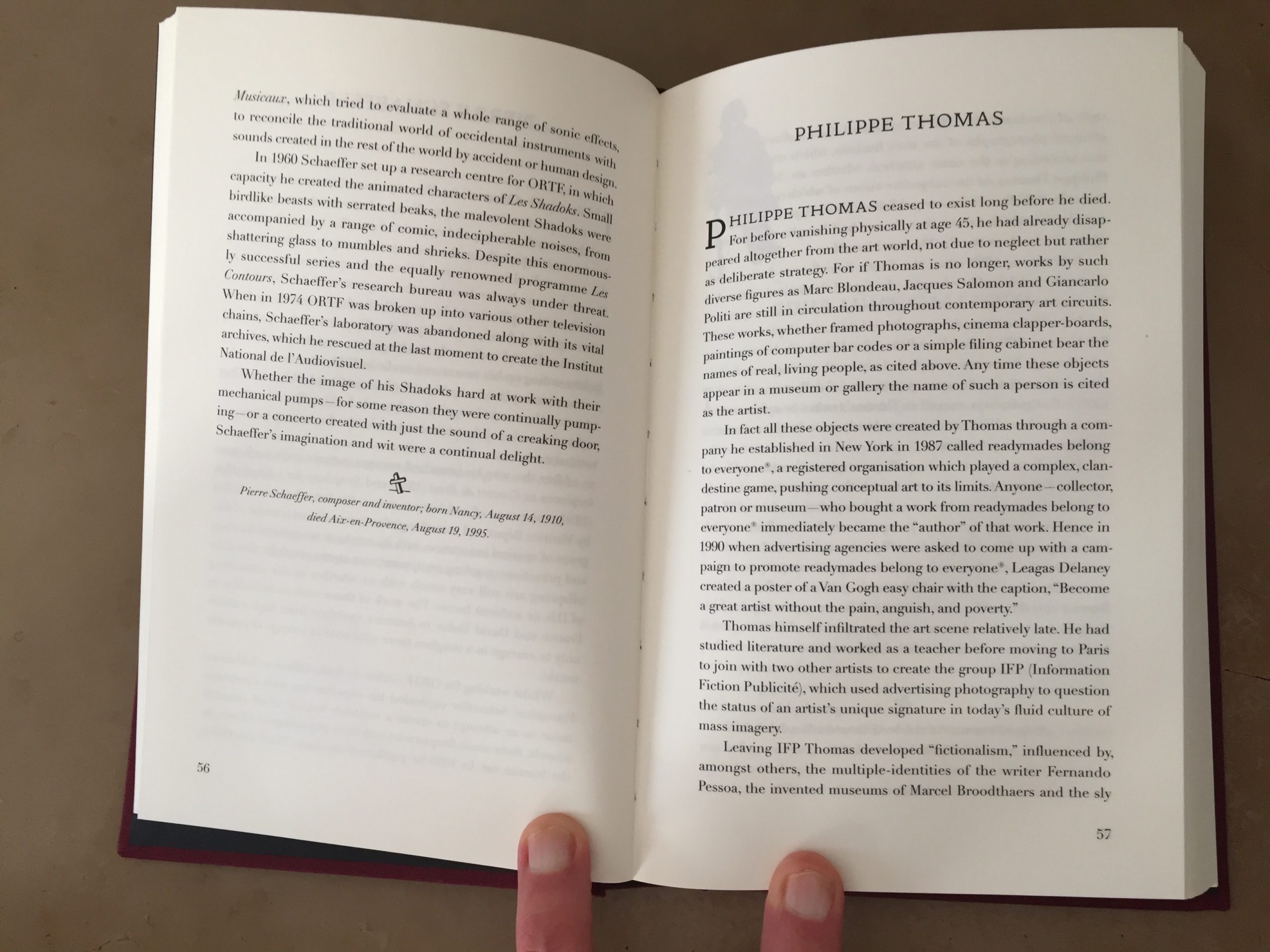
Extras
Meditation/Mediation: Adrian Dannatt
Videotour of the exhibition IMPASSE RONSIN. MURDER, LOVE, AND ART IN THE HEART OF PARIS
_____________
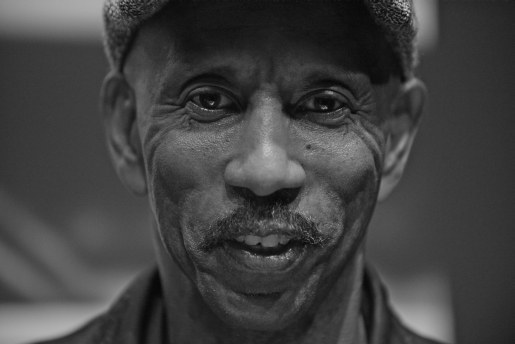
‘The Combustion Cycle, by Will Alexander, gathers three long poems written over two decades: “Concerning the Henbane Bird,” “On Solar Physiology,” and “The Ganges.” At more than 600 pages, the book calls attention to one of the great originals of contemporary US poetry, and at the same time it’s a record of something else—something that has less to do with contemporary US poetry and more to do with another model of time and tradition. It feels like a record of a shamanic engagement with nature, with geological time, and, perhaps most radically, with what the political theorist Jane Bennett has called “vibrant matter,” the movement of supposedly “non-living” materials, such as metals and rocks. Alexander seems to be both the most American of poets—part of several US traditions—and almost not even writing in American English, a poet foreign to his own language.
‘Alexander was born in Los Angeles in 1948. He is the son of a US military officer and traveled widely as a child, including a formative stint in the Caribbean, which, as Harryette Mullen argues in an essay about Alexander in Callaloo, proved an important international experience of seeing Black people in positions of authority. Back in the United States, he graduated from UCLA in 1972. But it wasn’t until the early 1980s that his work began to appear in print, first in Clayton Eshleman’s Sulfur, a journal that blended US avant-gardism with an international canon of poets such as Pablo Neruda, Aimé Césaire, Antonin Artaud, and Alejandra Pizarnik, and later in Nathaniel Mackey’s Hambone. Alexander went on to publish several books with small presses, including Vertical Rainbow Climber (1987) with Jazz Press, Arcane Lavender Morals (1994) with Leave Books, and Stratospheric Canticles (1995) with Pantograph Press. In 1995, he published Asia & Haiti with the signal avant-garde press Sun & Moon, which brought him a wider readership and more serious critical attention. This has been followed by 25 years of productive writing and publishing with a variety of presses, including New Directions and Chax Press.
‘Along the way, a number of astute critics have grappled with Alexander’s work and tried to incorporate him into various literary traditions—or claim him as almost sui generis. In 1993, the essayist Eliot Weinberger wrote about Alexander in Sulfur, positioning him as an outsider in the international tradition of Artaud and Césaire. In a 1999 article in Callaloo, the poet and critic Aldon Nielsen instead positioned Alexander in an African American lineage that goes back to Amiri Baraka and Sun Ra. Over the past 20 years, the poets Andrew Joron and Garrett Caples have persuasively situated Alexander’s aesthetic in a “neo-surrealist” California tradition that puts him in conversation with both Philip Lamantia and the Language Poets. Caples has pointed out that though a surrealist in many ways, Alexander works more with the materiality of the signifier than with the image-proliferation so fundamental to much of surrealism. …
‘The Combustion Cycle is a long book that’s not lyrical and that demands something of the reader. No, it’s not a “difficult” masterpiece à la Pound’s Cantos that demands readers catch every allusion (although Alexander does include a bibliography). This book demands that readers engage with it despite the lack of any arc or a grand edificatory design. This is a book whose “difficulty” lies in a simple proposition: can you read it for one, or two, or three hours? The result may not be the model of “getting it” that many readers expect. It’s not hard to access the text, but the difficulty is in bringing oneself to the text and letting it access you. Readers who do sit with the book for an hour will get something much different than what many recent poetry books offer: you will not “get it”—the transactional aesthetic experience—but it will alter your mind. This is a book written out of a trance and to induce a trance. This is a book that may change your brain chemistry. Or make you combust.’ — Johannes Goransson
Will Aleander @ Poetry Foundation
Close Listening with Will Alexander
‘Beyond Baroque’: A seminal ray encircling the planet
A NOTE ON OUR CURRENT EMBRANGLEMENT
Buy ‘The Combustion Cycle’
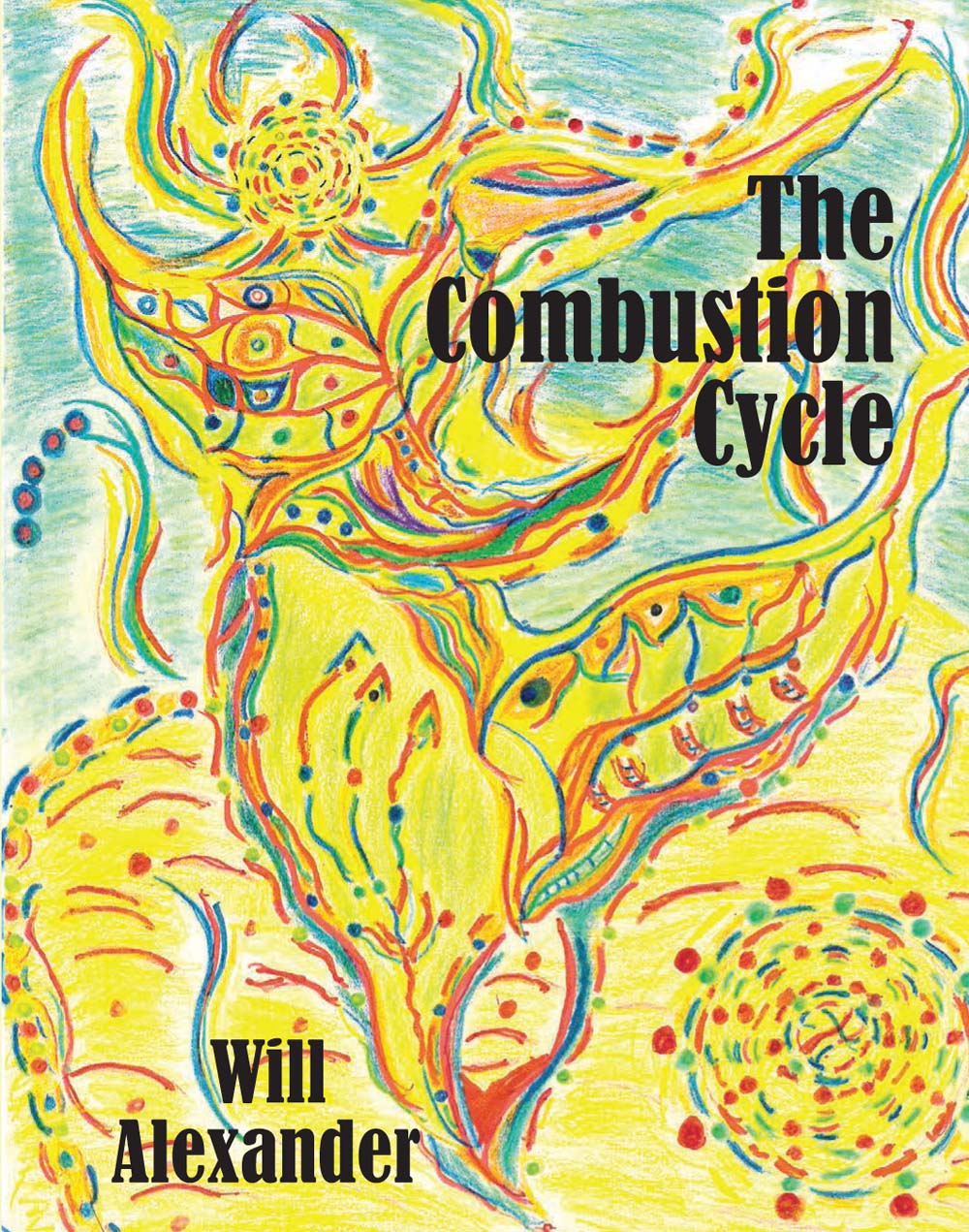 Will Alexander The Combustion Cycle
Will Alexander The Combustion Cycle
Roof Books
‘A long-distance runner extraordinaire, Will Alexander parses and devours information, code and arcana lest they parse and devour him, parse and devour us. What but deep seas and distant galaxies would make such a demand his extended soliloquies implicitly ask and overtly answer. These high-toned reflections and imprecations unfold in a march mode almost, an ever insistent rat-a-tat on the rim of a snare, flame and flame’s gnarled ignition. Here wonder and menace meet and reconnoiter, a singular, major addition to an already singular, major body of work.’ — Nathaniel Mackey
Excerpt
..
“…& at this brink
a cosmic ocular thirst
engendering
an avernal blue mass
being a sun uprisen from the dead
emitting by its light
a bluish curse from the abyss
sending bursts of sourceless energies beyond suns
being humming
that bursts as a collision of spells
being a combination of hell & the condition on land
released through birdless viaducts
through the contradictory exposure of comets that wander as nomadic spirals
analogous to myself as runic incendiary tension
so that
I’ve been brought to myself as a critical vertebrae of greenness
with a cervical lair
with a new mortality by transfer
& by transfer
that which engulfs
which supersedes entropy
by crucial centigrade release
being nutrients
that emit mosaics of solitude
elixrs that invade the body’s carbon
with qualitative tumult
with energetic prolongation
alive with inhalation
which sifts through tissues
that transmutes decay
& the 3 planes of our bodies
as living axial links
as invisible vertical scrawling
like a blank galvanic tree
part lizard
part shark
part bird
yet I seem as one unlinked
consumed by parallel disorder
as he who dwells by self-haunted demeanour
by numerical force contained by bewitched injustice
of course I seem maimed by subsidiary beasts
by jackals
by infortuitous riddling by crocidile
seeking to dwell inside by blood
like a sun transfixed by parasites
but I am he who explores by alchemical flux
being magus as animal paradox
I
who scales fire as intuition
above the scope of tortured animal wanderings above those birds dispossessed
by a world that has failed as spontaneous nascence
so I see such birds as jackals
as exponential mazes
reflecting my lizard as a failing crocidile’s body as the karmic offspring of my dying alabaster shark
enveloped
skittish
I am of that race of vanished antelope
yet alive
in the depth of blue volcanic deltas
an antelope
incarnadine
winged
storming across the opaque flows of blinding water
flowers
like a blurred velocity
being vanished carbon fractals
being diagonal by reversed existence
perhaps
a futile carrion spark
or a blank expressive gain through vapour
I cannot say
that beyond the mongoose valley there is salient
ferocity
or alchemic fact as the chatter of eagles
no
as if translated reflection
focused on negating a zone
3 or 4 barbarous moons ago
& this 5-billion-year seclusion of Earth
being a portion of rambling eternities
pullulating beyond my central capacity or depth
is why my visibility is darkened
to the Barbthroat Hummingbirds seeking terratorial
portion*
being dead to visibility
I am that which opens colour to succession & possibility
such as the ‘Cinnamon-throated hermit’*
or the ‘Black’-throated mango’ *
even if the Sun were transmuted to a matchless
viridian
to a pointless fractional pulse
there would nevertheless exist
life as primal lacunae
as entangled initiation
conducted through treacherous suspension
I do not exist as model
say
as a dove
or in a realm of burning bread
I am the initiates’ explosion
the primeval flaw
transmuting my lesions
spell after indigenous spell
I therefore declare my wounds
as emblems against bondage
against that which extolls
deseased being
I exist
as that interior gust that
significance against pre-
outlasts old uranium yields
no
certainly not a dogmatized cosmology
nor a drift that enfetters by moral exterior
even
while bewitched by discomfort
I feel as if cast beyond my own biology
as excursion beyond my lexical diptych as blank contaminate swan
crossing & re-crossing by arcane inferential
a holographic range
bringing about a wave intrinsic to simultaneity as spirit
not a singular hoardimg by trauma
nor hardened degradation throughout the after-life but a tendril
connecting spiraling registers of the firmament being sand & fire within snowlight
being a Mongol blaze from barbarous old horsemen
gold
in my hoar-frost lizard
in my alabaster shark
being transitional carbon
being shock by stormy anti-blaze
or anti-metrical hesitation
balanced between judgements
not the Sun as exploded rock-fish
or as light from old incendiary lepers
perhaps a genesis a quarrel a mandala
so there is vapour by essence
by fur as tantric spoil
being brilliance as living endurance
as central kinetic
connected by blue inferno fields
that flows from the empyrean downward
like irradiated oestrous
like cyanoethine or sucrose
engendering power with molecules that shatter gryphons
my essential commitment
a light more essential than sonar
so that it breathes & gives off concussion as essence
therefore
never conclusion as peril
as galling forensic exposure
never merging as codes
or definitives as encagement…”
Extras
Entanglement & The Vortex with Anne Waldman, Will Alexander, and Andrew Joron
Lunch Poems: Will Alexander
_____________
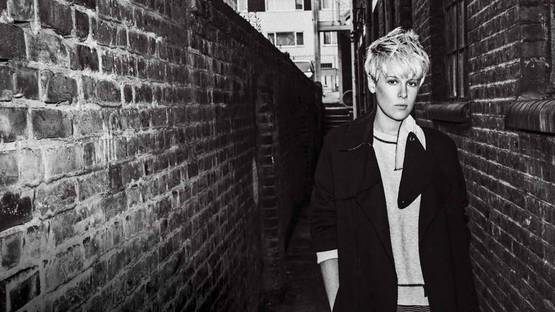
‘In 1935, Gertrude Stein declared in ‘Poetry and Grammar’: ‘I really do not know that anything has ever been more exciting than diagramming sentences.’ The rigorous thrill of sketching grammar’s architecture, the satisfactions of seeing where syntax may lead us, the sense of sense resolving, or not: this tricky prose kick is also present in the sculptures and screen prints of Helen Marten. Where the artist has spoken of her works as diagrams – maps of relation between exotic and mundane objects, luxe and grubby materials, attending ideas – I’ve always thought of them instead as sentences. Especially slippery sentences that slide through the mind and bear much pleasurable repeating before they will make known their meanings. In a ‘Lexicon’ for the catalogue of Drunk Brown House, her 2016 show at the Serpentine Gallery in London, Marten wrote in an entry on cartoons: ‘The whole grammar is geared towards a state of physical change and material sensation.’
‘A cartoon scuffle between form and feeling: this might be one way to describe Marten’s extraordinary novel, The Boiled in Between. There are the rubbery outlines of a story, or at least a setting. Two middle-aged characters, Ethan and Patrice, living in a frustrated, mangy suburbia, fixating on their queasy erotic and alimentary lives, the vagaries of weather and crumbling architecture, the habits of their neighbours. Overseeing all of this is the protean, immaterial ‘Messrs.’ They are a pair (or is it a legion?) of sentient, knowing atmospheres whose voices interrupt the monologues of Patrice and Ethan to comment on the characters and their universe. ‘We look down on these awful people and their endless capacity for enhancement.’ Each time they appear, the Messrs. are displaced and renamed: ‘Messrs. External &’ some new state or quality: Crumbly, Melancholy, Weary, Yellow, Peaty, Sorry. The life they observe, say the Messrs., is ‘Something like a syntactical form of mitosis, with each article of speech, each pulling of the bathroom plug, each lunch and breakfast in bed, all of it only a comma in the great future run-on unfolding.’
‘Language and body, in other words, are intimately involved, sentences branching and cells dividing. Impossible to quote Marten writing about sex, violence, food, age or decay without noting how much work the texture and rhythm of her prose are doing. The Boiled in Between is a novel that proceeds by image and incantation rather than much in the way of explicit plot. Here is Ethan: ‘Well what is a body anyway, when framed in words? A dough trough? A collapsing figure for poking and kneading? For baking, for burning, for pulling apart like a hot-pocketed roll?’ And Patrice: ‘I hoped for cosy berries in flabby tides of cream. The soft smell of new strained cheese.’ Elsewhere, a world of extreme violence is broached by an italicized news report: ‘a sixteen-year-old who, after throwing her newborn into a fast-flowing river, jumped in herself with a sack of stones around her neck; the outdated car-making machinery in a Mississippi factory tore the thigh and collarbone clean off one of the company’s longest serving employees.’
‘Marten’s sculpture also conjures a kind of machinery, sometimes sinister, frequently playful, always mysterious. Hers is an art in ambiguous love with objects and substances, which are complexly tesselated but also self-involved, singularly seductive or repellent in their own right. The stoniness of stone, the laciness of lace: these seem resolutely themselves, and also as if they might at any moment transmute, recombine, regenerate as anything else. So, too, in The Boiled in Between, where matter and things can appear more lively protagonists than Ethan and Patrice. Marten’s attention to textures is the book’s chief strangeness and achievement. Here is a novel in which a loaf of bread is ‘one of those loaves so heaped with sugar it could already be fifty years old, baked up with flory moths and pubic hair.’ In which the description of a humble garden sprinkler requires a page of infinitesimal, estranging detail: ‘Strung with tensile integrity cells amongst a web of slender tendons there is a complex network of pipes.’’ — Brian Dillon
Helen Marten @ Sadie Coles HQ
Sculptor Helen Marten on writing her debut novel
Weird Objects in Improbable Situations
I Can Begin to Learn Again’: Artist Helen Marten on Writing Her First Novel
Buy ‘The Boiled Inbetween’
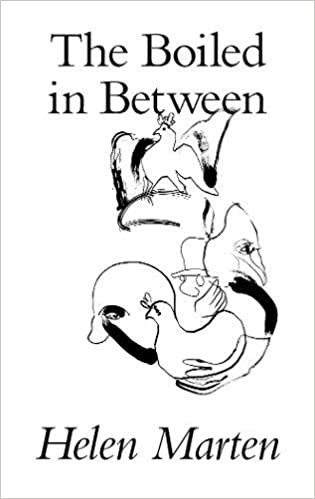 Helen Marten The Boiled in Between
Helen Marten The Boiled in Between
Prototype Publishing
‘The Boiled in Between is the debut novel by Turner Prize-winning artist Helen Marten, a bold and daring work of fiction which transposes the poetic sensibility of Martens visual work to the page. It is a challenging, playful, enigmatic, tactile and deliberately ambiguous work of great inventiveness, which will establish Marten as an exceptional talent and unique voice in contemporary fiction.
‘The novel began as an attempt to map the structure and stories of a house; within its tilted, sensuous, alchemical world, characters navigate strange, meticulously indexed landscapes real and conceptual to question language and definition and illuminate the associative movements of our minds. Spliced between three voices, the narrative is a project always in movement. The characters traverse these in-betweens: the hot-blooded living world; the curious disembodiment of the imagination; and the rampant snipping away at time in a progression morbidly (and comically) ever closer to death.’ — Prototype Publishing
Excerpt

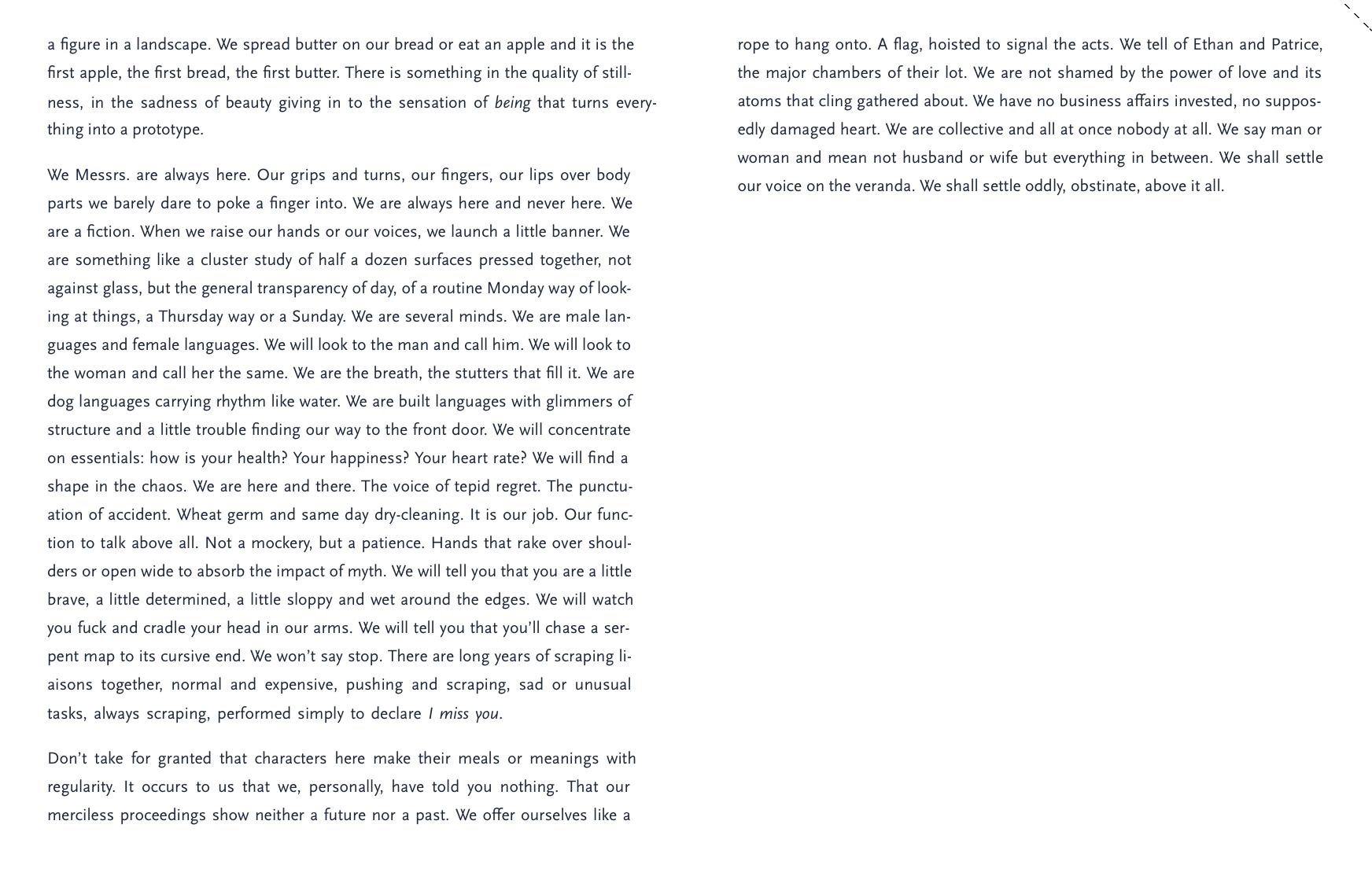
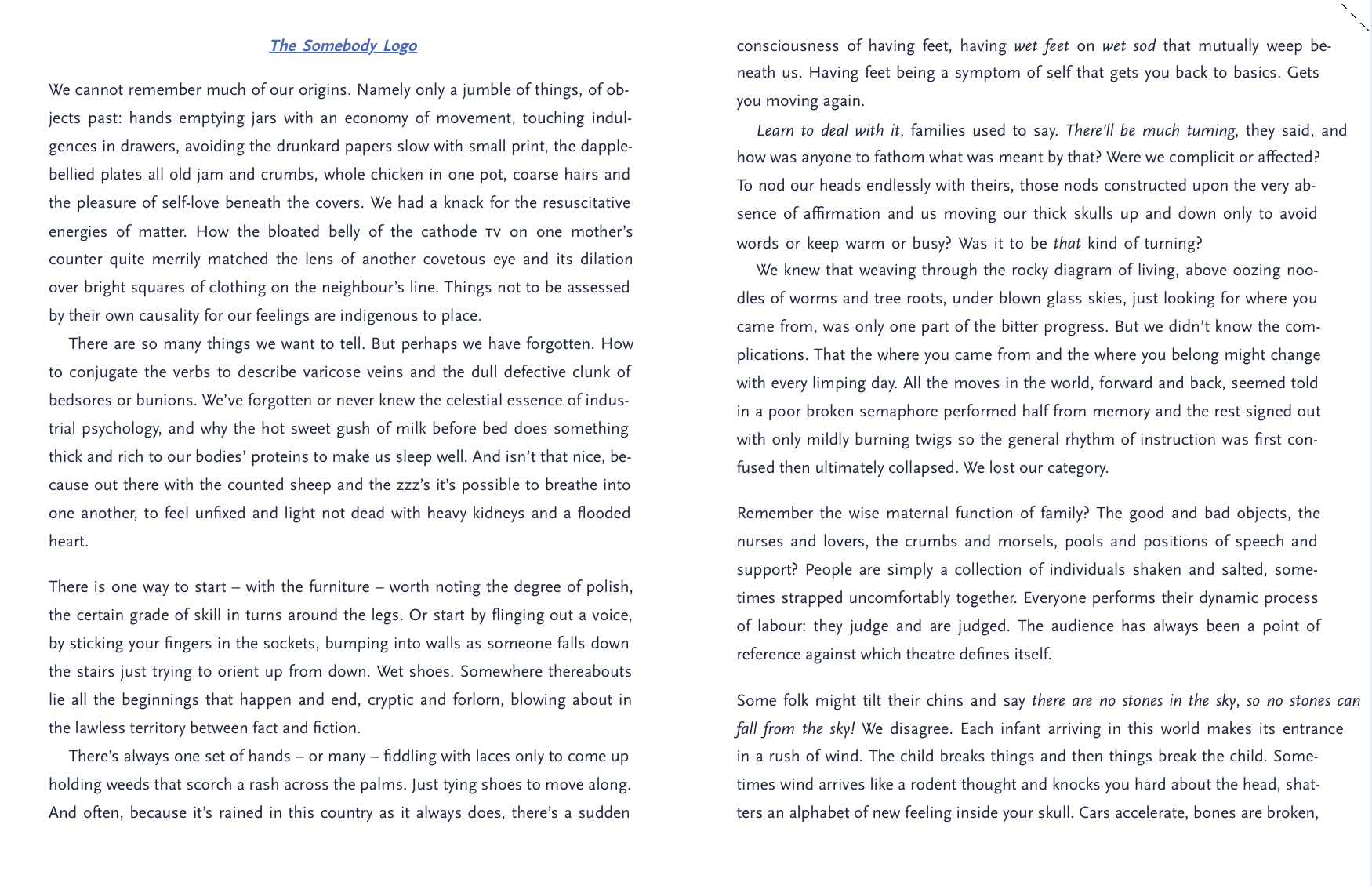
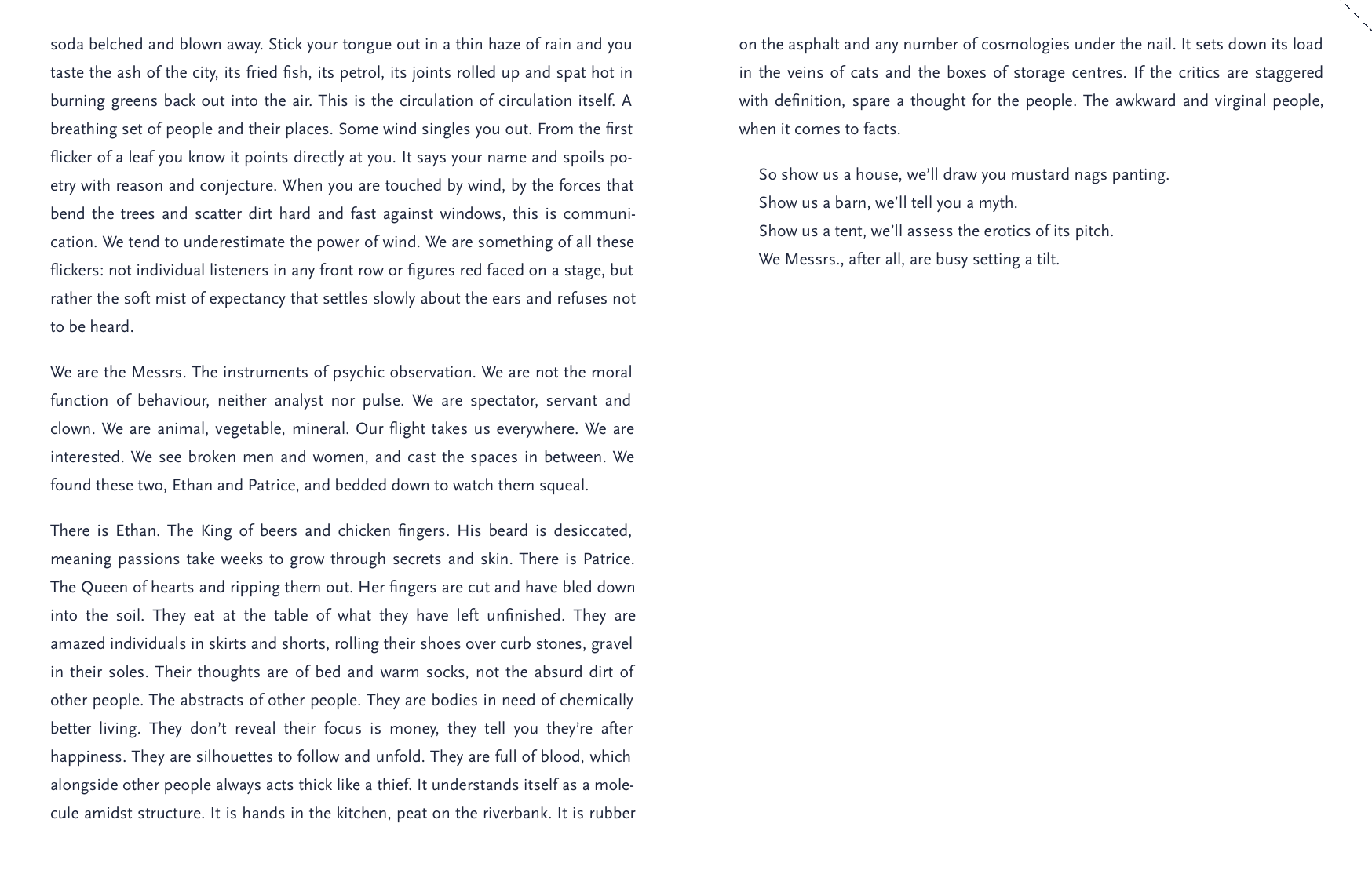

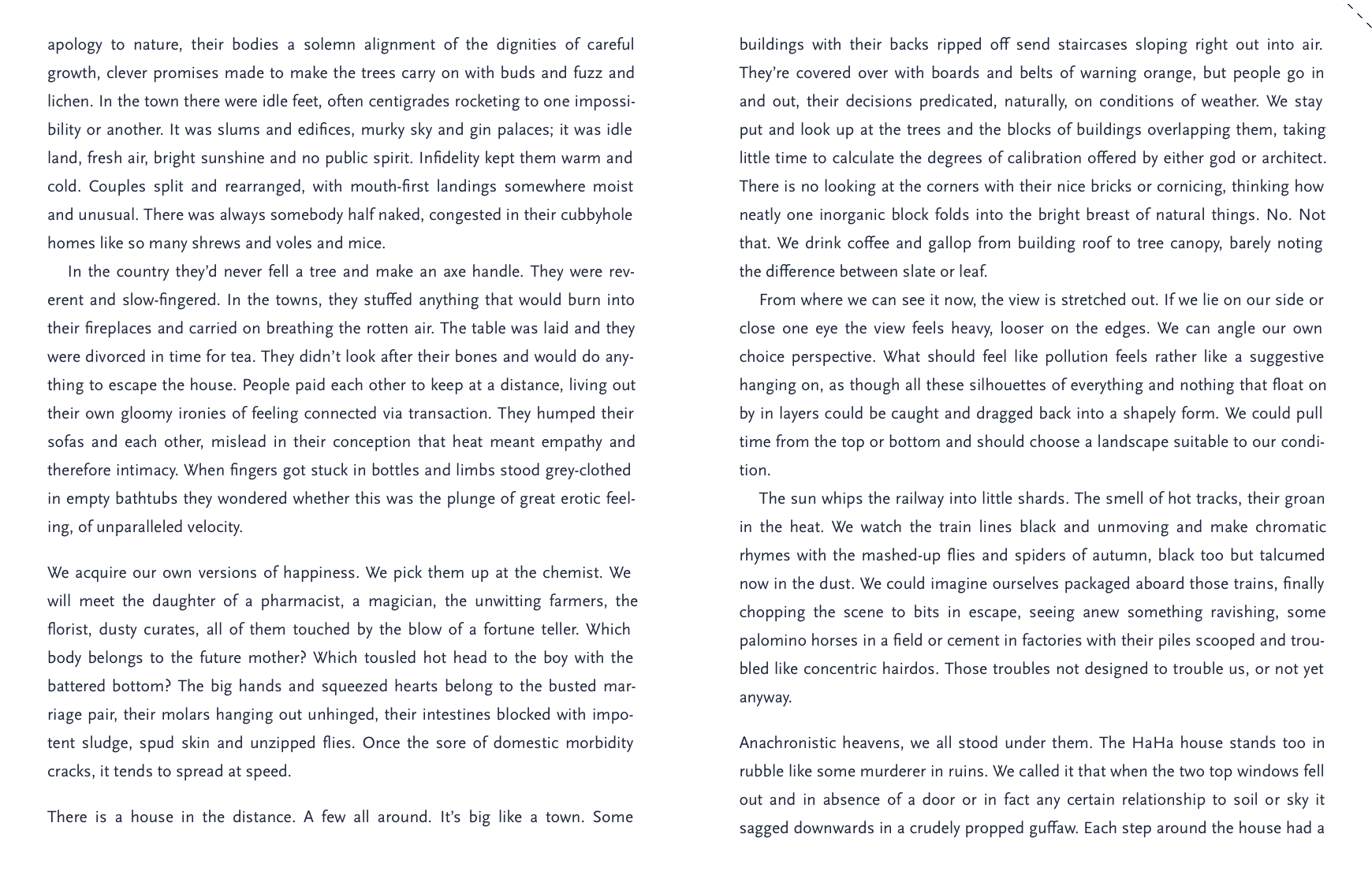
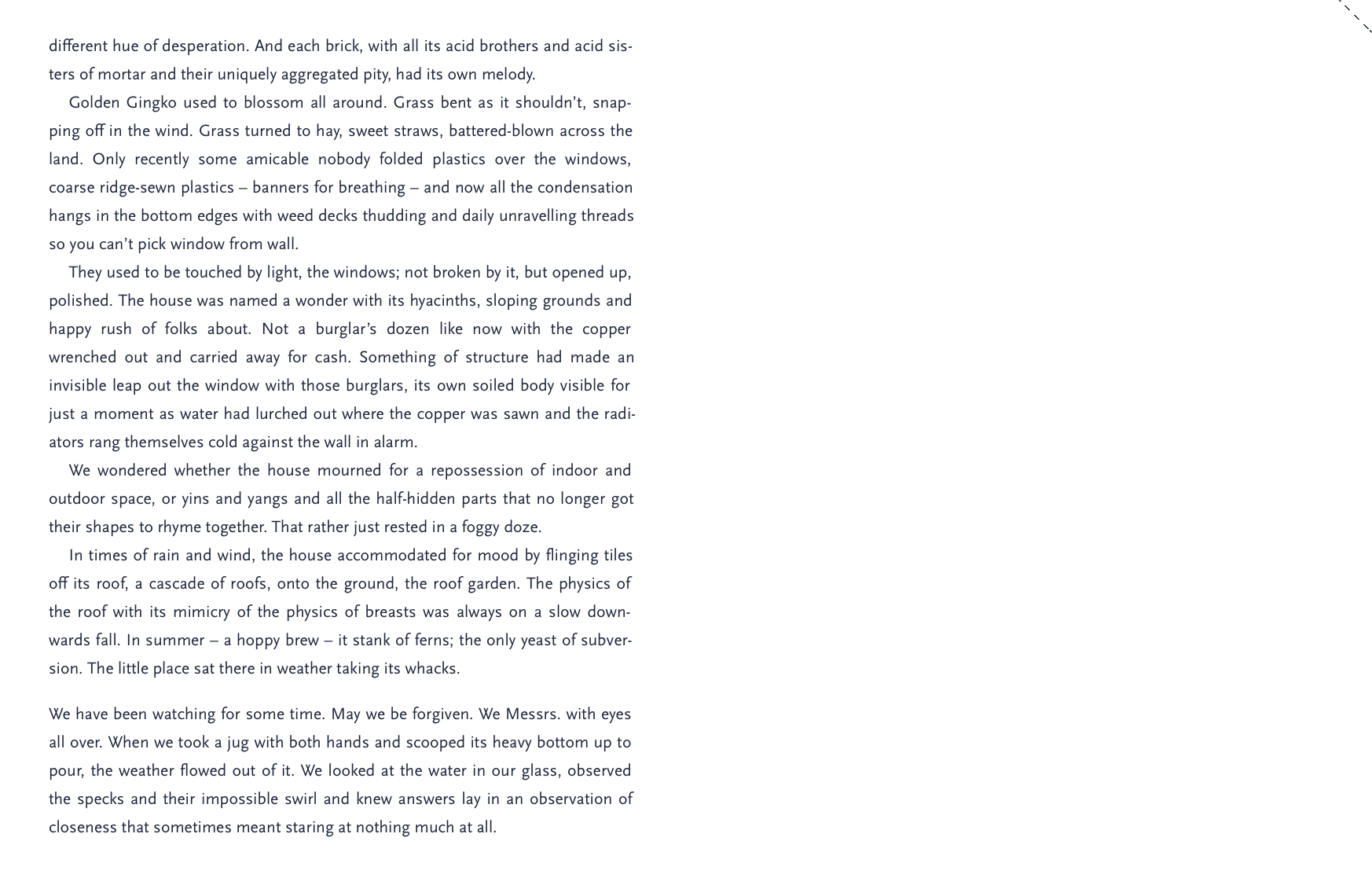
Extras
The Boiled in Between Reading 6: Eileen Myles
The Boiled in Between Reading 2: Samantha Morton
_____________

‘Robert and Marlene are the last of the original punks, entwined in a relationship in mid-80s Camden. Marlene is filled with self-loathing, while Robert dreams of possibilities that seem so close but are simultaneously unreachable. Cabut’s 80s are evoked through a haze of speed and acid and sex and squalor, and he ignores the shortcut of kitsch pop-culture references (“outside, they recognised that the world had somehow, while they were dreaming of poetry and chaos, assumed its form of consumer and market culture”). Our couple eke out their existence in the last glimmers of light from punk’s 1977 explosion.
‘The pair – especially Marlene, haunted by her dead father and the ghosts of old boyfriends – are caught in stasis, unable to grow up: “punk was…a way of stopping your past from becoming your future. But from 1976 onwards Marlene was trapped in that punk moment – like a fly in piss coloured amber.”
‘The story is seen mostly from Robert’s viewpoint, one that darts back and forward in time as he tries to inject a sense of narrative into a situation that reeks of stasis (although there is scepticism towards the notion of plot – “if nothing happens, everything becomes meaningful”). This effort to find narrative becomes the search for the means to tell the story itself, a nice po-mo touch.
‘Like (say) Kerouac, it’s shot through with sadness. Not just the comedown, but the inability to bridge the gulf between the enlightened moment of Beatitude, and the bleak surroundings you exist in the rest of the time: “[Jarman’s] Jubilee led Robert to think that even if there is pattern and substance in the universe, this substance is meant to be hallucinatory and arcane.”’ — Paul Gorman
Richard Cabut Site
Richard Cabut @ Twitter
Richard Cabut Speaks to Eyeplug
A PUNK’S LIFE AS FICTION
Buy ‘Looking for a Kiss’
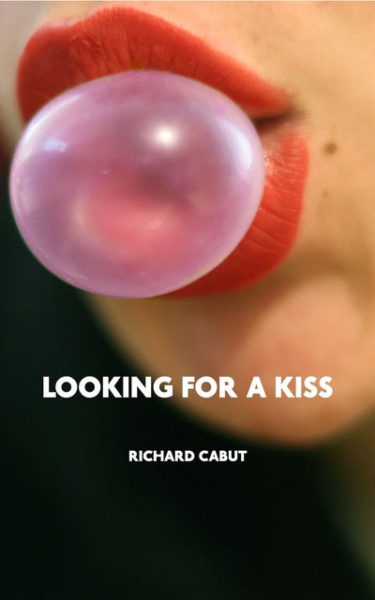 Richard Cabut LOOKING FOR A KISS
Richard Cabut LOOKING FOR A KISS
Sweat Drenched Press
‘Looking For A Kiss. 80s post-punk, pop art, acid odyssey – teenage perversity, primal screams/scenes.
‘A fabulous chronicle of speed, madness and flying saucers (Warhol/Edie Sedgwick reference) – punks adrift in 1980s London (and New York): strange sex, breakdown and breakup, the nature of melancholy, the Spectacle, bathroom functions, clairvoyance, personality crises, the eternal quest for cool and the endless search for redemption. And much more. ‘A Jarmanesque journey in Westwood heels,’ D. Erdos, International Times’ — SDP
Excerpt

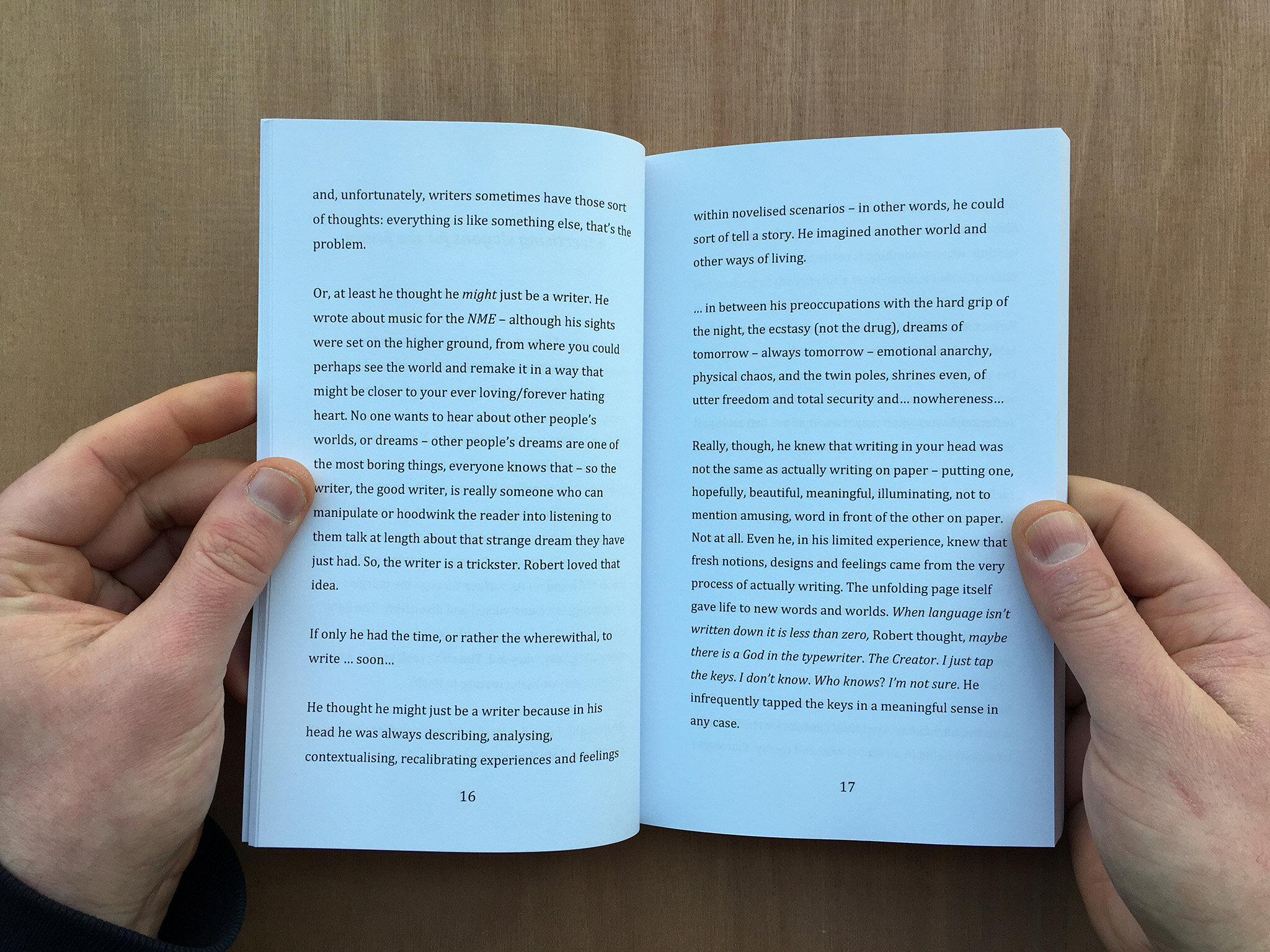

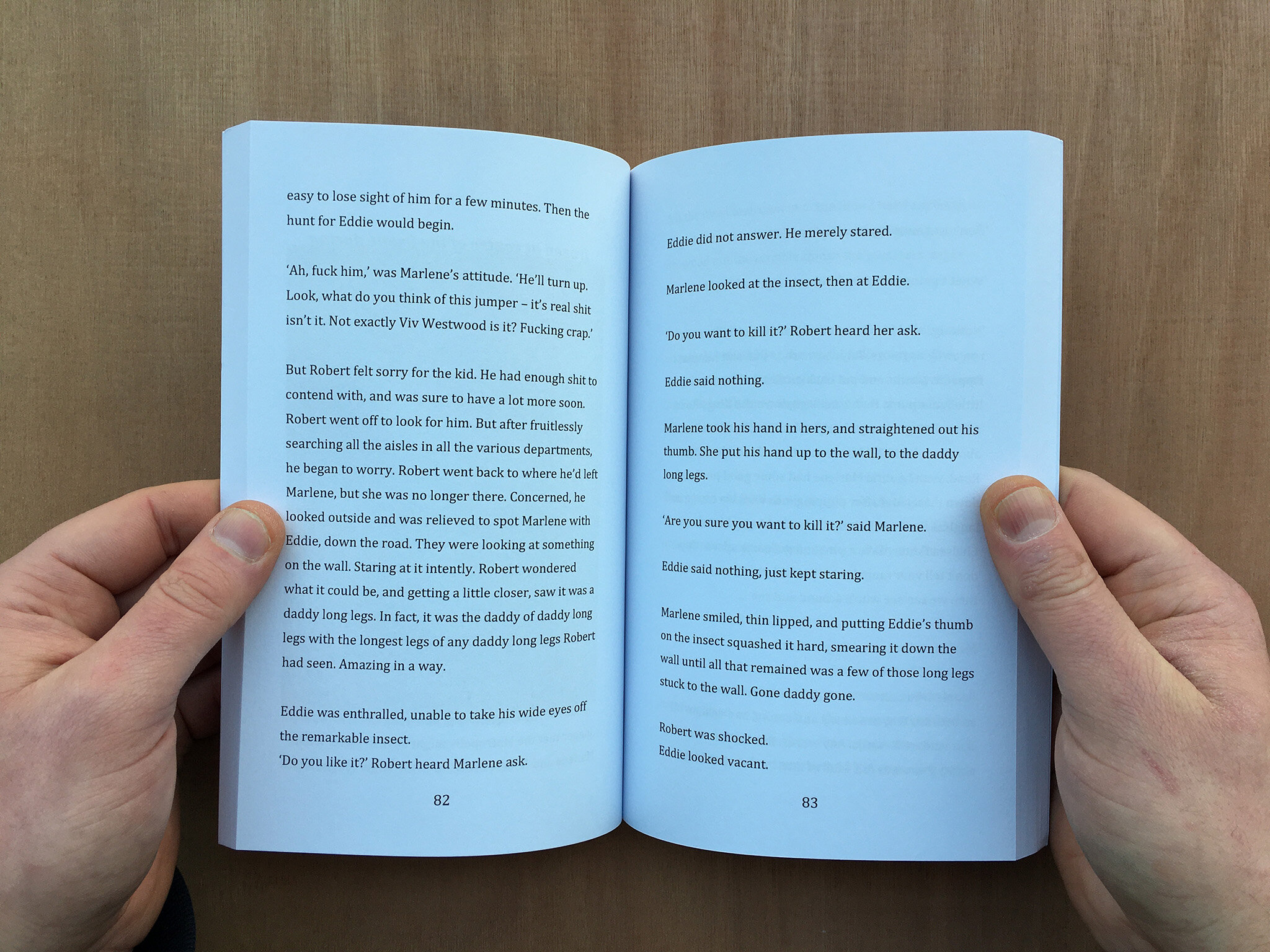
Extras
Looking for a Kiss movie
Richard Cabut Punk Rock n Roll Art Show 3 8/11/19
*
p.s. Hey. ** David Ehrenstein, It’s a fairly new site/Archive, and they add films regularly, so it’ll be interesting to see what they score. The films are housed there with permission, so that obviously limits what they can get. Well, the novel ’92 …’ is gigantically better than the film, and that was definitely a problem in my case. ** Jeff J, Hi, Jeff. Ah, okay, gotcha. Well, re: the reunion period, first I’ll say there’s not a consensus among hardcore GbV fans about those albums. Opinions are all over the place. That said, I would say that ‘Let’s Go Eat the Factory’ is great and up there with their albums from the classic, early phase. Followed by ‘Class Clown Spots a UFO’ and probably ‘English Little League’. On the current line-up albums … Granted, it’s brand new, but, so far, I would say ‘Earth Man Blues’ is among the best ever GbV albums. Other top faves would be ‘Surrender Your Poppy Field’ and ‘Warp and Woof’, I think. ‘Styles We Paid For’ is also great. But they’re all very good, understanding that I’m of the opinion that Pollard is incapable of putting out un-excellent stuff. And I’ll get on trying to make a best-of style playlist thing. I’m obviously thrilled by your great interest in things Pollard. Yeah, that Archive is a real boon, and it’s just starting up. I think Zac is waiting until the restrictions are removed before he returns to Paris, which would mean around mid-May. I sure hope so. He is much needed here ASAP. Congrats on almost being through the Covid woods, so to speak. I’m relieved to be close to starting my journey to travel friendliness. Great about your closeness on the draft, man! Them’s the opposite of fighting words right there. ** Mark Gluth, Hi, Mark! Okay, second nudge noted. I’ll get on that. ‘Warp and Woof’ is a great one, I agree. I super highly recommend the new one ‘Earth Man Blues’. It’s a knock out. Very happy to hear you guys are good to go. Yeah, relieved to be almost on my way. And they’re saying there should be no-problem travel for the vaccinated between the US and the EU by early summer, which is the vast majority of the reason I’m getting vaccinated. Take care, maestro! ** h (now j), Hey! Very lovely to see you! You sound chaotically busy. Which even sounds romantic under the current circumstances. Great luck getting to the grading deadline. Okay, that part doesn’t sound so romantic, I guess, ha ha. Take good care, my friend! ** Dominik, Hey!!! So happy you liked the post! Awesome! Is there a SCAB leak today? The EU’s disinclination to go whole hog on celebrating Halloween is one of life’s greatest mysteries to me. Ouch! (Your sunburn). Yeah, I was 16 years old when that happened, and I can still feel the agonising pain when I try. I’m surprised that I have yet to come across a slave who’s into yellowing toenails, especially given that worshipping feet is so trendy among that crowd. Please thank your love for sparing me when you see him next. Love taking LSD and realising he’s God and relocating himself to heaven and looking down at the planet Earth and using his hugely loud, inescapable voice of God to yell ‘Fuck you! (thoughtful pause) Except Dominick!’, G. ** Bill, Hi. Yeah, that Archive is a find. I don’t know ‘The Tangle’. I like the name. The premise intrigues. It got some pretty bad reviews there, but Letterboxd can be a shit show. I’ll try to track that. Oh, it’s a stained glass piece? Now I see it. Huh. Even more impressive. Rather strangely, no, I don’t think I’ve ever done a stained glass day here, and what a fun idea, man. I’ll get on that as soon as … today. Thanks! And thanks re: the side effects. I guess, given the way I do the blog, you’ll know. Eek. ** All-righty. Here, today, are a new batch of five books that I read in the ultra-recent past and recommend to those of you who are in the mood to read a book. See you tomorrow.




 Now available in North America
Now available in North America 
The Richard Cabut book is sat waiting for me here on my bedside table and I very much look forward to cracking it open.
Guess what though, on Friday I’ll be going out for a home visit! First time I’ll have left this hospital in 9 weeks, woah. It’s to see what my mobility’s like getting around the building, just for maybe an hour but it’s most definitely good news and proof of my progress. Some light at the end of the tunnel at last, and I’m projected to be fully liberated a week or so after that.
Hi!!
Ah, you’re really bringing it with these posts! Today’s is a treat as well! Thank you!
Indeed, there is a SCAB leak today, right here: https://scabmag.files.wordpress.com/2021/04/mark-ward-three-studies-of-two-figures.pdf
(It’s killing me, but I can’t seem to insert these nice and neat hyperlinks, only these long ass atrocities.)
Right? I mean, everything’s a big deal, Valentine’s Day and all that, but not Halloween?
It’s weird, actually, about the slaves, because foot fetish does seem to be a big thing. Although… I think I’m doing fairly okay without knowing that someone wants to suck on yellow toenails, haha.
Hahaha, thank you for your love! How sweet of him; I’d be a bit anxious if God yelled “fuck you” at me. Love building an escape room where people have to dress up as little pieces of shit and find their way out of a huge rectum, Od. (I’m pretty sure this has been forming in me somewhere since your “shits” post, haha.)
There’s a cable TV show stateside about”Hoaders” and the efforts friends and family make to keep them from burying themselves alive in mounds of stuff.
Didn’t watch the Oscars all the way through. A bad year for movies — at least the ones THEY saluted –and a boring show. Chadwick Boesman’s grave was ROBBED. Anthony Hopkins again? Oh Please. He’s 83 so it’s big deal. I really liked him in Ivory’s “the City of Your Final Destination” but next to n one saw that.
I can certainly relate to old punks and (ahem) hoarding.
Yeah letterboxd reviews can be all over the place. Especially when the movie doesn’t talk down to the audience and explain all the details. “The Tangle” is flawed, but worth a look. I certainly enjoyed it.
Look forward to seeing the stained glass day, if you do decide there’s enough to work with…
Bill
Dennis, Great selections, as usual.
I kinda love that you call it my “Call Me by Your Name” novel. It cracks me up no end.
Yeah, that’s the thing, maybe they read the first few paragraphs and are like, “This is shit. Next.” Could be.
Then again, look at all those rejections for “Closer” and it’s definitely not shit.
Who knows?
But yeah, when they ask for a sample, it’s usually for the first chapter or first five pages. Some ask for more, but that’s rare.
I think that phrase may, for some people, imply that something’s going to happen that’s not. Or that there’s something “lascivious” there that’s not. But it definitely fits in with everything and gets fleshed out later on. At the same, a phrase that doesn’t do that actually works too. Hmm. I have to think on this.
Maybe, too, I have to be more focused re: whom I target with a query.
Argh, it’s all so…weird. 😀
I posted here yesterday, but apparently it got eaten by the blog.
Have you read Andrea Long Chu’s FEMALES? I finished that last week. She writes in very broad strokes designed to provoke: the book starts by saying “everyone is female, and everyone hates it,” and while this obviously means “everyone is at least sometimes subject to the negative aspects of stereotypical femininity,” that pissed off many readers. In fact, while she trashed Bret Easton Ellis’ WHITE in Bookforum, her style reminds me of his essays. A celebration of Valerie Solanas and reflection on her own transgender identity, it’s most insightful when she writes about porn., especially suggesting that conservative men fear porn because they ultimately think sexual desire (or the possibility of “porn addiction”) weakens them.
Dennis Wilson, I mean Cooper! Hey, who said you could add to my mile-high books-to-read stack? They all sound killer. Note: Adrian Dannatt’s obits include Iran-born playwright/director Reza Abdoh, who is ultra-deserving. I saw many of Abdoh’s brilliant, bewildering, Artaudian-in-your-face, multi-media productions at L.A. Theater Center in the 90s. I’ll never forget them!! (I may have mentioned Abdoh to our mutual writer friend Golnoosh Nour. Hi, Golnoosh!)
Hey Dennis, I’ll check out the new GBV asap, which seems to be later this month on streaming, at least in the US. Thanks for the call out.
Not really related but have you checked out the new Spencer Krug? I’m not sure what my thoughts are but it has some very nice moments for sure.
Yeah I just read the EU is happy with our vax rate and so travel is a thing again soon. Erin and I are already half assedly planning some travel back to France in 22.
Take care
Hey, Dennis,
Kicking off the week with a typically stunning line-up of writers, I see. I couldn’t be happier. All of these are wonderful. I’m especially taken by Kate Durbin’s piece here; it fascinates me. Adding that to the to-read list now. Adding all of them to the list. How was your weekend, sir? Wonderful I hope. Mine was okay. The highlight was going into the city and finding a hardcover of Edmund White’s Genet biography in the basement of the Strand for $10. Also on Sunday evening I had a few friends over and we watched all three of the Fred movies, which was predictably excruciatingly horrible, but also very fun because it was with friends. Not so bad at all. Now I face a work-heavy weak with weary eyes, but at least I’m getting dose 2 of the Pfizer vaccine next Sunday—that’s my light at the end of the tunnel. Also I watched two fabulous movies today, “Investigation of a Citizen Above Suspicion” and “Woman in the Dunes”, that really cheered my spirits despite the drudgery ahead. And—this was a shocker—I got accepted to NYU. I won’t be able to go, it’s much too expensive, but it feels good to have gotten in anyway. So I’m in a decent mood. Et tu? Rainbows and unicorns and pots of gold and whatever else you please your way this Tuesday.